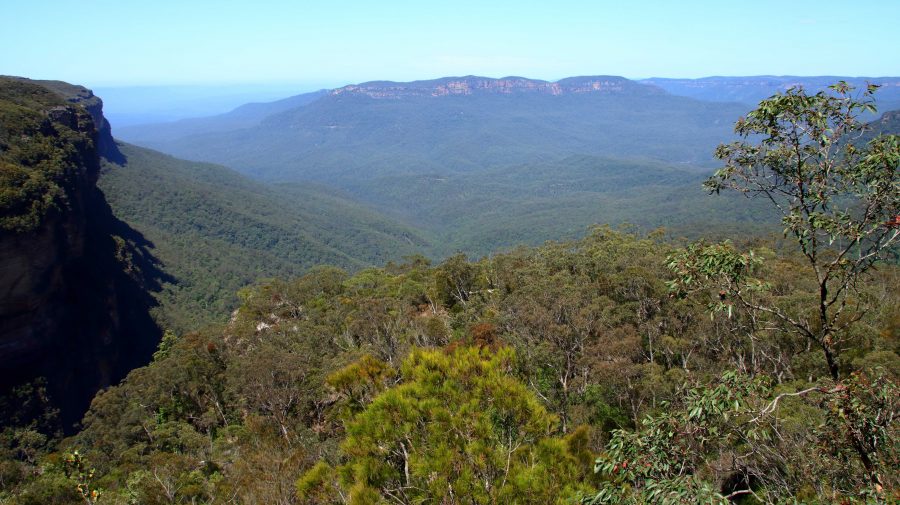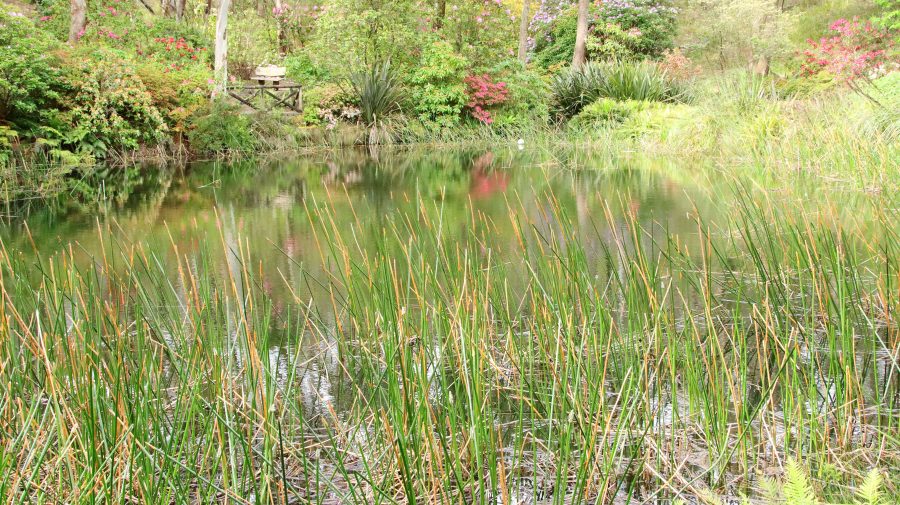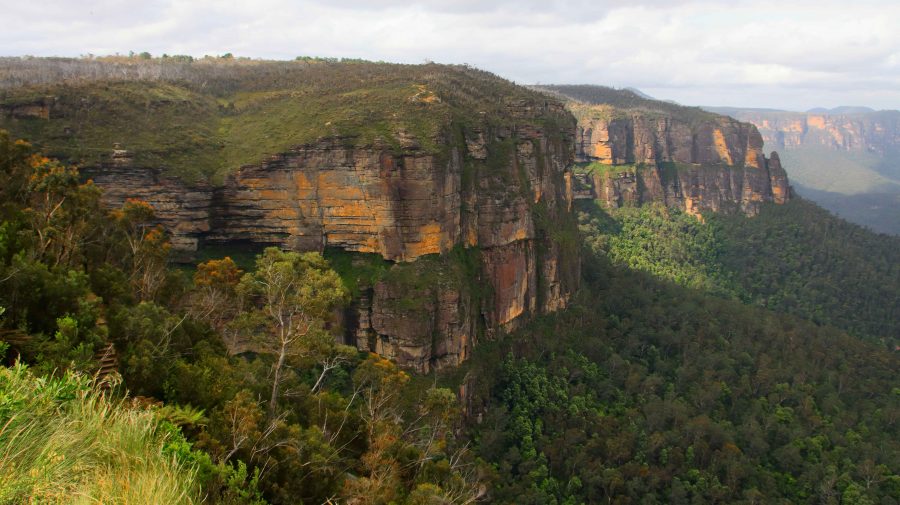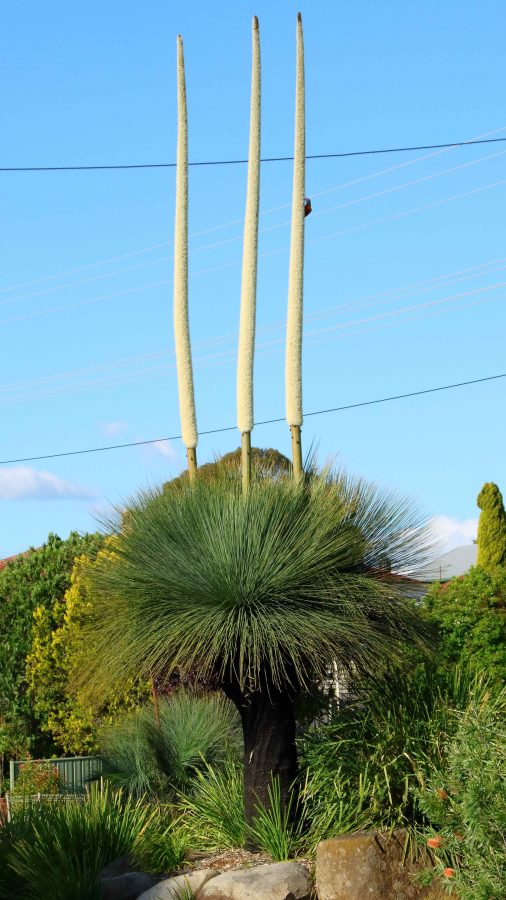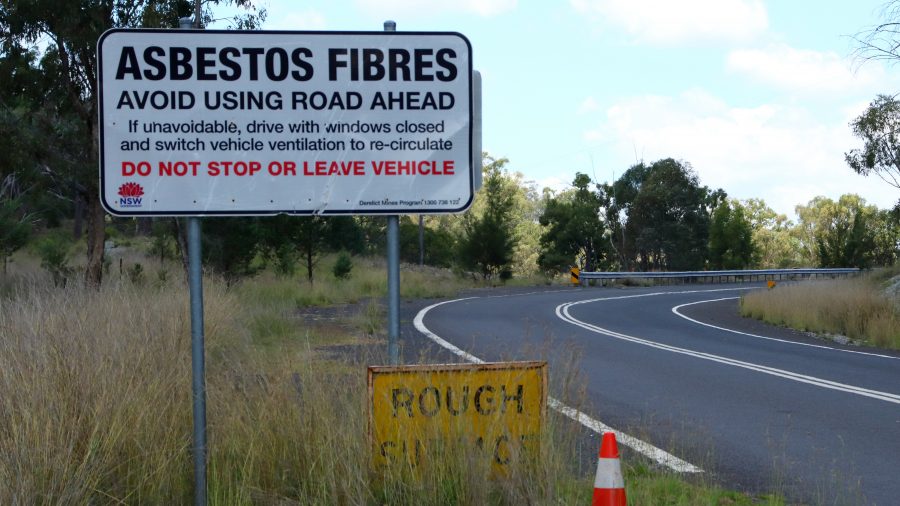Aileen had hurt her back yesterday morning, of all things, putting her trousers on. Tuesday night had been a bad night for her, so the priority for Wednesday morning was to find a chiropractor. She located one in Katoomba, with an appointment just after lunch. That determined the direction in which our sightseeing lay that day, but it was not much different to what we had in mind.
We started our tourist day at Wentworth Falls. As we approached the parking area for the walk to the viewing point we noticed smoke in the air, then spotted a helicopter with a water bucket underneath. Must only have been a small fire as the smoke reduced quickly but was still a bit of an obstacle to clear photos. Views into Jamieson Valley were good but when we moved along to the viewing Point for Wentworth Falls, the flow of water over the drop was a bit disappointing.
The next stop was Sublime Point, where we walked down to the top viewing area that gave us a view of the lower lookout. Sublime Point protrudes into Jamieson Valley further than any of the other promontories, so does provide a top vantage point. It also provides a view of the back of The Three Sisters.
Next in order was Leura and the Leura Cascades but most of the area was closed to the public with car parks sealed off with temporary gates.
By now it was nearing lunch time. We found a parking space under the library and took the lift up to a cafe on an upper level. The chiropractor was located just over the street. I walked Aileen over while Bernard and Ruth waited.
Aileen felt better, so we continued our drive. As we were close to Echo Point we resumed there, taking in the views of mountains and valley and taking those mandatory photos. We went back to have another look at Leura Falls area but had no better luck. Finally we drove to Katoomba Falls. Again, there was not much flow in the stream and as it is quite a long walk out to the point where the water actually falls, we decided to give it a miss and move on.
With the Katoomba area pretty much done, we returned to Blackheath to visit the Campbell Rhododendron Gardens. Rhododendrons grow well in the mountains with specimens of this family of shrubs adorning private gardens at evert turn. Despite the uniform floral theme, the gardens are worth a visit. Ruth and I previously visited about six years ago.
The gardens are spread over a timbered hillside with the blooms juxtaposed with native trees that provide natural shelter. A stream runs through the lower area with lagoons that provide reflections and a home for water birds. Sadly, many of the blooms were past their best but still provide a blaze of colour over the hillside. There is an entry fee of $5.
There is another verry good lookout in this area, just south of Blackheath. Evans Lookout provides views into the Gross Valley and of some of the best Sandstone cliffs in the area. It provides parking for one end of the Evans Lookout to Govetts Leap walk, a very popular walk through what is known as the Grand Canyon. This is a walk that I would have loved to do but I am afraid that time has passed me by.
By this time Aileen was feeling the effects of the chiropractor’s pummelling so we returned to our cabin to rest and prepare for dinner. Bernard is a keen golfer so decided that we should patronise the Blackheath Golf Club for dinner. We had another pleasant meal and had the dining room almost to ourselves.
That was not, however, the end of our day. Aileen turned eighty on 28th November this year. We could not pass up the opportunity to celebrate. We had shouted her dinner and Ruth had purchased a birthday cake and candles. When we returned to our cabin we continued the birthday celebration with cake. The candles could not be lit because we did not have matches and it was too late to try to borrow some. We sang “Happy birthday” and talked.
Then bed time. That is always a great time of day at our age.




